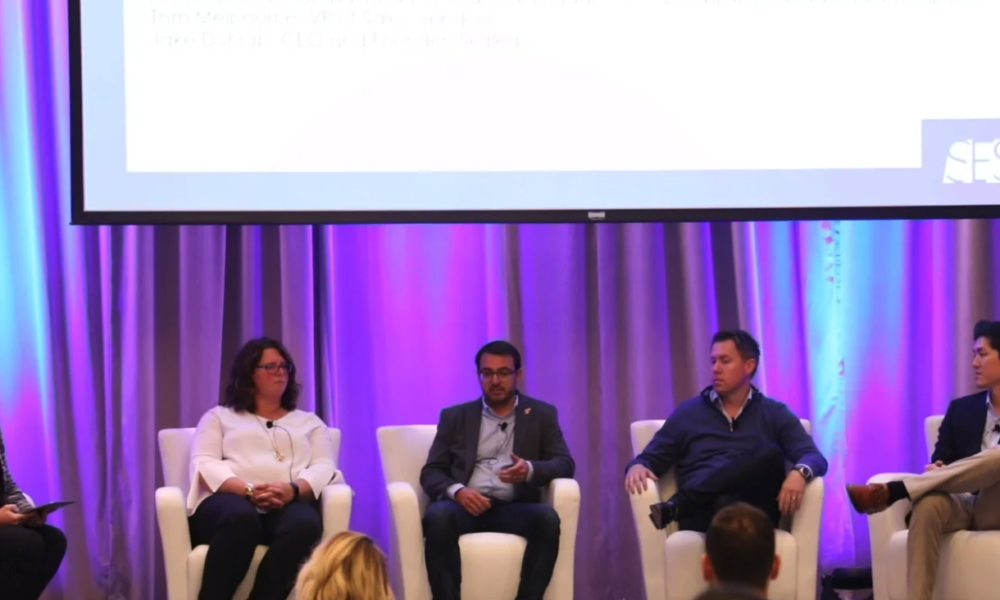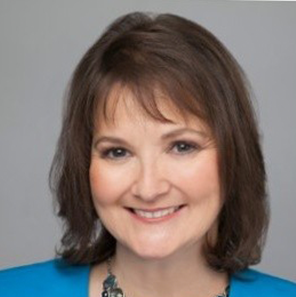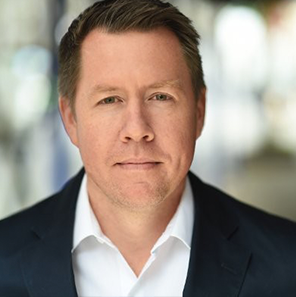Episode 37: Kirsten Boileau on Digital and Social Selling
4.1K Views | 23 Min Read
Shawnna Sumaoang: Hi, and welcome to the Sales Enablement PRO podcast. I am Shawnna Sumaoang. Sales enablement is a constantly evolving space, and we are here to help professionals stay up to date on the latest trends and best practices so they can be more effective in their jobs.
Thanks so much for joining us today. I’d like to start by having you introduce yourself, your title, and your organization.
Kirsten Boileau: My name is Kirsten Boileau. I am the head of digital enablement services under digital marketing for SAP. I sit in the global organization of the marketing department and I am essentially responsible for a lot of the training and enablement that happens around digital marketing, but also digital selling. So, I own our digital selling program which has been running for the last 5.5 years at a global level and a couple of years before that in a more pilot mode. Then, I also own the training and enablement around our launch of the marketing cloud as well as our training and enablement for the upscaling of our entire marketing organization in digital marketing. So, I do a lot of training and enablement, not always for sales but for both sales and marketing.
SS: That is very interesting. And is that the way sales enablement is structured across SAP or is this a unique organization within SAP specifically focused on enabling both marketing and sales?
KB: I think I am fairly unique in the entire organization of SAP. I have kind of carved out my own space and that’s the way it seems to have worked out because the needs that I have stepped up to fill. And at the same time, the digital selling program, I have been running it for so long that I’m not going to let that one go. It’s my baby. So, seeing where I can expand the soft skills that I have learned from running the digital selling program and all the training and enablement soft skills that I have learned doing that, I have expanded them into some of the needs that we have had within digital marketing to incorporate those other two topics.
SS: That’s awesome. So, for our audience, I would love to level set. When you say digital and social selling, can you explain that to our audience a little bit?
KB: Sure. So, we have this program where we are training and enabling all of our sales executives worldwide as well as some of our marketing people because they see the value in leveraging social platforms and digital platforms to engage with our customers. Social and digital selling is just another avenue to engage your customers. It’s where our customers and probably anybody else’s customers are hanging out right now on social platforms and digital platforms whether they are traditional social such as LinkedIn, Twitter, Facebook, and/or it could be digital platforms like an online community or something along those lines. And we use digital tactics as well, not just that social interaction where you’re having conversations on social platforms but using video to engage. There’s a whole host of tactics that would be included in essentially digital and social selling.
SS: What were some of the challenges that the organization was facing that really brought to a head the fact that this was needed?
KB: There were so many things that reps were experiencing, and I come from that world. I was a business development rep prior to taking on this role and trying to make hundreds of dials a day just because nobody was answering their phone. So, the thought was, “well, the more people we call, the more actual live people we’ll get on the phone.” But it’s difficult to make truly good, quality calls if you’re trying to make 100, 150, 200 dials a day. It becomes all about that next number, and you’re not thinking about the customer on the other end whatsoever. That was one of the big things, how do we drive better quality conversations with people through a different medium, because obviously they’re not picking up the phone. That was one of the biggest things that we were encountering.
SS: So, let’s start at the beginning. How did you actually go about building out your digital selling program?
KB: Well, earlier that year we had partnered with LinkedIn and created a number of trainers for LinkedIn Sales Navigator. As I was working with our sales learning teams and rolling out some of these initiatives around getting people to use LinkedIn Sales Navigator, it got me thinking that these people will be able to use LinkedIn Sales Navigator, but social selling is not about using a tool. It truly is about changing the behavior and changing the way that you interact with your customers, having a good brand that can build your customers’ trust in you without having talked to them, listening to your customers so that you know what to talk about when you actually go to engage with them on social media. Those things were not really included in that LinkedIn Sales Navigator tool training. You could add bits and pieces into it but it was not set up that way.
When I decided to take on the role of leading this program, I said, “okay, we’re going to build this out, and it’s not going to be just an hour training on how to use a tool.” I think at the time, we made it a full-day program. It was very hands-on; how to use LinkedIn.com, how to use Twitter, how to use the various other tools that you could use to listen to your customers or to interact in different ways. We really started to build out that behavior change piece, the concept piece of the training and that’s really where we started out.
SS: So, obviously with any kind of digital selling, as well as with social media, there can be a really rapid pace of change there. How do you stay on top of enabling the reps when maybe a new feature rolls out or they may change the way something is done within one of the systems like LinkedIn or Twitter? Do you guys have the ability to kind of roll out iterative training to your field?
KB: Yes. So, we do things like on a bi-monthly basis, we have an all-hands call, a social selling all-hands call. We usually get about a thousand people out to that call. We have a whole communications team within my organization that they do blogging on a weekly basis to talk through some of the best practices. We do a digital selling week twice a year where we really focus in and run webinars around the clock for a week on specific topics. We have a lot of different mechanisms in place to make sure that we get those things off the ground.
SS: I love that. In fact, just for folks to make it a little bit more concrete, what would you say are the top five most successful ways in which people go about digital selling, if you had to give some tactical tips?
KB: Do your listening. Do your research. Figure out where your customers are hanging out and then go and hang out in those places. And listen first. If there is only one of the big things that I teach people is they really need to listen first. Listen twice as much as you speak, as my grandma used to say.
Really understand where it is that your customers are coming from, what they are thinking right now, the things that are top of mind for them, so that when you actually go to engage with them, you’re in that sweet spot of knowing exactly what they want to talk about. You can come in with not necessarily a solution to their problem, but a conversation that starts you on that journey toward understanding exactly how to solve the issues that they are experiencing. Once you’ve listened and you actually engage in those conversations, don’t just share content about your company, but really engage with other people’s content, start conversations.
The third one would be to leverage all of the tactics that you have available to you. You have email, you have the phone, you have video, you have social. Leverage all of those tactics, use all of the tools in your toolbox to reach out and to drive those conversations forward.
Number four would be don’t let the conversations drop once the sale is complete. The post-sale conversations need to keep going. You need to keep providing value, especially in this cloud economy where you need to keep those conversations going so that you get the subscription again, whatever timeline you’ve got, whether it’s a one year or two year subscription, you need to keep those conversations. You need to keep the value going so that when it comes time for renewals, you haven’t lost their trust.
The fifth one I would say kind of falls in line with that one which would be, be authentic. Be who you are. Don’t try and be someone else and don’t hard sell. This is not a place to push your agenda forward. It truly is a place to grow relationships and build trust, so that when it comes down time to actually solve someone’s challenges that they trust you to do it.
SS: I would love for you to explain to the audience how enabling reps to do digital selling differs from maybe more traditional selling tactics.
KB: I think one of the biggest things I’ve seen in my tenure in the digital selling program at SAP has been that it is truly about behavior change and change management. This is not just a tool that you are teaching someone to use. Most people, not everybody, but most people understand how to use a social platform. They are fairly intuitive, and they are not that difficult to understand. So, it’s not about teaching people how to use the tool. It truly is about teaching people what the new behaviors are that they should be leveraging, and then how to apply those behaviors to the tool. That’s the biggest difference that I’ve really seen, I think.
The behaviors are so important to being successful and truly driving change requires a lot of effort. People tend to want the quick fix. You’re wanting to lose weight, you want to lose weight, 30 pounds in 30 days. That’s not really how lasting change happens, and so it really becomes an effort to make sure you put in the time and the effort to truly change the way that you operate, change the way that you engage with your customers, change the way that you think about the way that you go about your day, to truly have the impact that you need to have on your bottom line.
SS: And since you brought up the notion of impact, how do you measure the impact that your enablement over digital selling has on the organization?
KB: So, when we first started five years ago, we were really trying to prove that the training enablement that we were doing was truly having an impact on the sales reps and the sales management’s goals. One of the things we did was we gave the full training and enablement scope to one team and then the second team, we just gave them the tool LinkedIn Sales Navigator and showed them how to use it. And we watched the two teams for six months and then at the end of the six months, the team that had truly changed their behavior and changed the way that they interacted and engaged with customers actually delivered seven times the pipeline that the other team did.
Then we tried to start actually, beyond manually tracking opportunities having come from social selling, we got things set up in the CRM so that the reps could flag “this came through social selling”. Then, having that data was great. By 2016, we had a huge amount of pipeline and revenue that was attributed to social selling. But what we kind of came to the conclusion at the end of that was the fact that we have this large number, but that only means that people are clicking a flag. It doesn’t really mean that we have truly changed the behavior and the way that our reps are actually going about their business.
In 2017, we started working on the next phase of our measurement. Now, we have those key indices dashboard and the key indices cover kind of the main eight things that any sales manager would be tracking: days to close, acceleration rates, volume, value of deals, volume of the opportunities, and then the value of revenue closed on those deals, all those kinds of things. What we’ve been able to do is take those opportunities that were flagged as social selling in our CRM system and track those. Then, compare them to deals that were not flagged as social selling, and we see the true impact of what changing your behavior truly is.
SS: It sounds like you guys have definitely moved up the maturity curve by way of being able to measure your impact. That’s very cool to hear. I want to shift gears a little bit. At the Sales Enablement Soirée last fall, you had discussed using different tools and strategies to personalize engagement and obviously that’s really important in today’s selling. How should sales enablement practitioners go about selecting the right personalization tactics for different moments of the buyer’s journey?
KB: I think this is where listening really comes in because personalization can be as little as adding a salutation or a first name to an email, and as deep as truly understanding your customer. And I saw Gary Vaynerchuk talk about this actually a while ago where he discovered that one of his customers liked a particular hockey player and so sent him a hockey jersey with that player’s name on the back. That’s personalization.
I think that you have to truly listen, you really have to understand your customer, understand the context of the role that they’re in and the industry that they’re in, and be able to flip that understanding into actually engaging with them in the right way at the right time, and knowing exactly what’s going to drive that for them. Gary’s example is pretty high-end and not everybody has that kind of spare cash lying around to be able to do those kinds of things for everyone that they are trying to interact with. However, you can do that in very small ways, by truly understanding them, knowing things about them. Everybody likes to talk about themselves, and by asking those questions about them and truly making it about the customer and not yourself, that is where I think the personalization lies.
SS: I think you’re absolutely right and I think that’s why social is so critical to selling these days. It’s because social channels allow sellers to actually get that peek into how to personalize it because people tend to put online a lot of information around their personal preferences, their skills, their interests, the groups that they’re involved in. The deeper a rep can dive, the more personalized they can be.
KB: Absolutely. And I just think it really comes down to listening. Not a lot of people talk about listening as a key component of digital selling, but I honestly think it is one of the foundational pieces that you need to have in your toolkit.
SS: Absolutely. You also spoke of the subject of measuring customer sentiment and using that data to guide your engagement best practices. What are some of the ways in which you’ve seen teams successfully leverage that information in your sales enablement efforts?
KB: I think this is where customer experience comes in and truly understanding and it again comes back to listening, I truly believe. Again, after the sale or after you’ve had an interaction with that customer, listening to the kinds of things like, did you share perhaps something that made them think about a particular topic and then the next day or two, you see them actually share something perhaps related to that point you made in the meeting? And understanding those things can help you to really carve out that very, very personalized customer experience for your prospect.
SS: I couldn’t agree more. I would like to pivot a little bit now and start talking about marketing because I think that that’s a unique angle to your respective role at SAP, the fact that you are not only enabling sales reps on digital selling, but you are also enabling marketers on digital marketing. I would love to understand what that program looks like with your marketing team.
KB: It is quite large. Of course, we have about 2,000 marketers around the world and varying degrees of digital understanding. So, what we’re doing is really trying to start with the foundational elements of digital marketing and build on that. We are trying to offer some really deep dives into the various topic or focus areas of digital marketing and things like email marketing and/or SEO, data and analytics, social media marketing. Social media marketing is one of those things that a lot of people know a little about, and we really want to help our marketers be professionals at social media marketing and give everyone in the organization the opportunity to have that knowledge and that background. And then apply it to our marketing.
Of course, we’re going through a marketing transformation at SAP and how do we do that? We start by truly delivering a training enablement program that will not only give them the education, it will allow them then to apply that education to some real-life scenarios through apprenticeship and coaching models. Then, they also have the opportunity to be recognized for the business impact that they are delivering, for new, innovative programs that they are running, and that kind of thing.
So, we have that full scope of enablement. If you think about what I’ve done with digital selling, having training and enablement starts with here’s some e-learning you can take, then here’s some in-person sessions that you can take, and then we have coaches that sit with them as they actually start to engage with their customers online. Then, having recognition for what they’re doing and truly measuring the impact of what we’ve done.
Those same concepts apply to marketing no matter what kind of enablement program you’re running. So, we’re essentially doing the same thing. We’re starting with delivering some training and then allowing them to apply it with some coaching and partnership models in place that allow them to perhaps fail a little bit and then learn from those mistakes, recognize the successes, and measure the outcomes.
SS: And you mentioned that SAP is going through a marketing transformation. I would like to talk about that a little bit because I think any time an organization is going through any transformation, whether it be on the marketing side or the sales side, I think enablement becomes an absolutely fundamental role for the organization. I would love to get your perspective in how the organization has really leaned on enablement to successfully roll out a lot of the transformation initiatives that it’s tackling.
KB: I think one of the biggest pieces, which is probably why I have these projects or programs is because change management is so key to an enablement program, right? Making sure that people understand what’s coming, tell them again what’s coming, let them actually experience what’s coming, and then see the impact so that they truly understand this is not something I did just because management said I had to, this is truly having an impact on the business.
At the very beginning of your change management process, success stories, whether they’re from internal or external sources, become the key driver for that change. Then, as you start to go through the change process, collecting more and more of those internal success stories helps to drive even more change and it spreads across the organization. Getting people to buy-in, in the beginning, is a little bit more difficult. The more people that you get to buy into that change, that transformation and then building out that success story library and having people be able to say, “I want that to be me”, or “that fits exactly with what I’m trying to do”. Then, if people can truly connect with something that you’re trying to change, making it feel like it’s their own, then you can drive more and more change in the organization.
One of the things that has helped us to be successful is not only getting commitment from leadership at the very beginning to actually run a pilot or to run the program, but to have that continuous leadership commitment shown throughout the program. So, in our all-hands call, I think part of the reason that we see such high numbers on a bi-monthly basis – that’s a thousand people coming to a call, and sometimes it’s at the end of the quarter or towards the end of the month, just the way that schedules work out – is because we actually have our executive sponsors come to that call and they only talk for two or three minutes. But from the sales and marketing side, we have our executive sponsors come and they talk about how important this is to SAP, how important this is to our SAP One Team, and why it’s so important, and get people rallied again as to why they need to be continuing on with changing their behaviors.
SS: Thanks for listening. For more insights, tips and expertise from sales enablement leaders, visit salesenablement.pro. If there is something you would like to share or a topic you want to know more about, let us know. We would love to hear from you.















